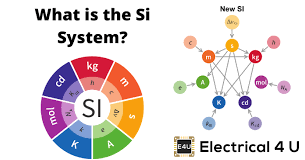Nuclear energy: How do nuclear power plants work?
Among the main forms of electricity production in the world, nuclear energy is responsible for about 16% of this electricity. However, there are some countries that are more dependent on nuclear energy: while in Brazil, for example, only 3% of the electricity used is produced by nuclear plants, in France 78% of the electricity is generated by them (data from 2008).
In the United States there are more than 100 nuclear power plants, although some states use this type of energy more than others; while in Brazil we have only two in operation: Angra 1 and Angra 2, with a third (Angra 3) being installed, all of which are part of the Almirante Álvaro Alberto Nuclear Power Plant.
The main question is: how do nuclear plants work ?
To begin with, it is important to define what nuclear power is. It is the energy released in the transformation of atomic nuclei. Basically, what happens is the transformation of an atomic nucleus into several other lighter nuclei, or even, isotopes of the same element.
The nuclear fissions , reactions involving the breaking of a core heavier in other smaller and lighter after the collision of a neutron in the initial nucleus, are the basis for the production of energy in nuclear power plants.
Thus, as uranium is a widely available element on Earth, it is the main resource used in the nuclear reactions of these plants. Uranium 238 (U-238), for example, which has a half-life of 4.5 billion years, makes up 99% of the planet’s uranium; uranium 235 (U-235), on the other hand, makes up only 0.7% of the remaining uranium and uranium 234 (U-234), which is even rarer, is formed by the decay of U-238.
Although less abundant, the U-235 has an interesting property that makes it useful both in the production of energy and in the production of nuclear bombs: it decays naturally, like the U-238, by alpha radiation and also undergoes spontaneous fission in a small time interval. However, U-235 is an element that can undergo induced fission , which means that if a free neutron passes through its nucleus, it will be instantly absorbed, becoming unstable and dividing.
Let us consider, then, a neutron that approaches a U-235 nucleus. When capturing the neutron, the nucleus splits into two lighter atoms and hurls two to three neutrons – this number depends on how the uranium is divided. The two new atoms formed emit gamma radiation according to how they fit into their new states.
The likelihood of induced fission in a U-235 atom is very high: in a properly functioning reactor, each ejected neutron causes a new fission. Furthermore, the capture of the neutron and the subsequent division of the nucleus occur very quickly, at intervals of the order of 10 -12 s. Not to mention that a single nucleus, when dividing, releases an enormous amount of energy, both in the form of heat and in the form of gamma radiation. This energy production is governed by the well-known equation E = mc 2 , due to the difference in mass between the products of fission and the original atom.
For a uranium sample to have the above properties, it is necessary that it be enriched, so that it contains from 2% to 3% more than U-235. The 3% enrichment is sufficient for use in a nuclear reactor that works on energy production.
